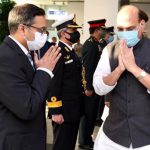Delhi’s Air Quality Worsens After Diwali Celebrations
New Delhi: The air quality in Delhi dropped sharply after Diwali celebrations, pushing most parts of the city into the ‘red zone’. Out of 38 air quality monitoring stations, 36 reported pollution levels between ‘very poor’ and ‘severe’, reflecting a major environmental setback for the capital.
At 10 pm, Delhi’s overall Air Quality Index (AQI) was recorded at 344, falling in the ‘very poor’ category, while four stations showed ‘severe’ pollution levels, crossing the 400 mark.
Severe Pollution Reported in Key Areas
According to the Central Pollution Control Board (CPCB) data from the SAMEER app, the following stations recorded ‘severe’ air quality:
-
Dwarka (417)
-
Ashok Vihar (404)
-
Wazirpur (423)
-
Anand Vihar (404)
The city’s 24-hour average AQI, measured daily at 4 pm, was 345 on Monday — an increase from 326 recorded on Sunday, showing a consistent deterioration in air quality.
Majority of Delhi Under ‘Very Poor’ Category
By Monday afternoon, 31 out of 38 monitoring stations registered ‘very poor’ air quality, while three locations already entered the ‘severe’ zone.
Experts warn that air quality levels are expected to worsen further on Tuesday and Wednesday, potentially pushing the city into the ‘severe’ category citywide.
AQI Categories Explained
The CPCB classifies air quality levels as follows:
-
0–50: Good
-
51–100: Satisfactory
-
101–200: Moderate
-
201–300: Poor
-
301–400: Very Poor
-
401–500: Severe
Delhi’s current readings place most of the city between ‘very poor’ and ‘severe’, posing health risks to all residents, especially children, the elderly, and those with respiratory illnesses.
Sources of Delhi’s Pollution
As per the Decision Support System (DSS) data, transport emissions contributed 15.6% of Delhi’s total pollution on Monday, while industrial activities and other sources accounted for 23.3%.
The combination of firecracker smoke, vehicle exhaust, and low wind speeds worsened the air quality following Diwali night.
Authorities Implement Stage II of GRAP
In response to the rising pollution levels, the Commission for Air Quality Management (CAQM) has enforced Stage II of the Graded Response Action Plan (GRAP) across the Delhi-NCR region.
This stage involves tighter controls on industrial emissions, construction activities, and vehicular pollution to reduce toxic air levels.
The move came after a detailed review by the GRAP sub-committee, along with forecasts from the India Meteorological Department (IMD) and the Indian Institute of Tropical Meteorology (IITM).
Supreme Court’s Green Firecracker Order
Earlier, on October 15, the Supreme Court of India had permitted the sale and use of green firecrackers in Delhi-NCR during specific time slots —
-
6 am to 7 pm, and again
-
8 pm to 10 pm on Diwali eve and Diwali day.
Despite these restrictions, the AQI spike after the festival indicates widespread use of regular firecrackers, contributing to severe pollution levels in the capital.
Outlook
Environmental experts predict that Delhi’s air quality may deteriorate further in the coming days due to low wind movement and residual emissions.
Authorities are urging citizens to limit outdoor activity, wear N95 masks, and adopt eco-friendly practices to help combat the post-Diwali pollution crisis.














